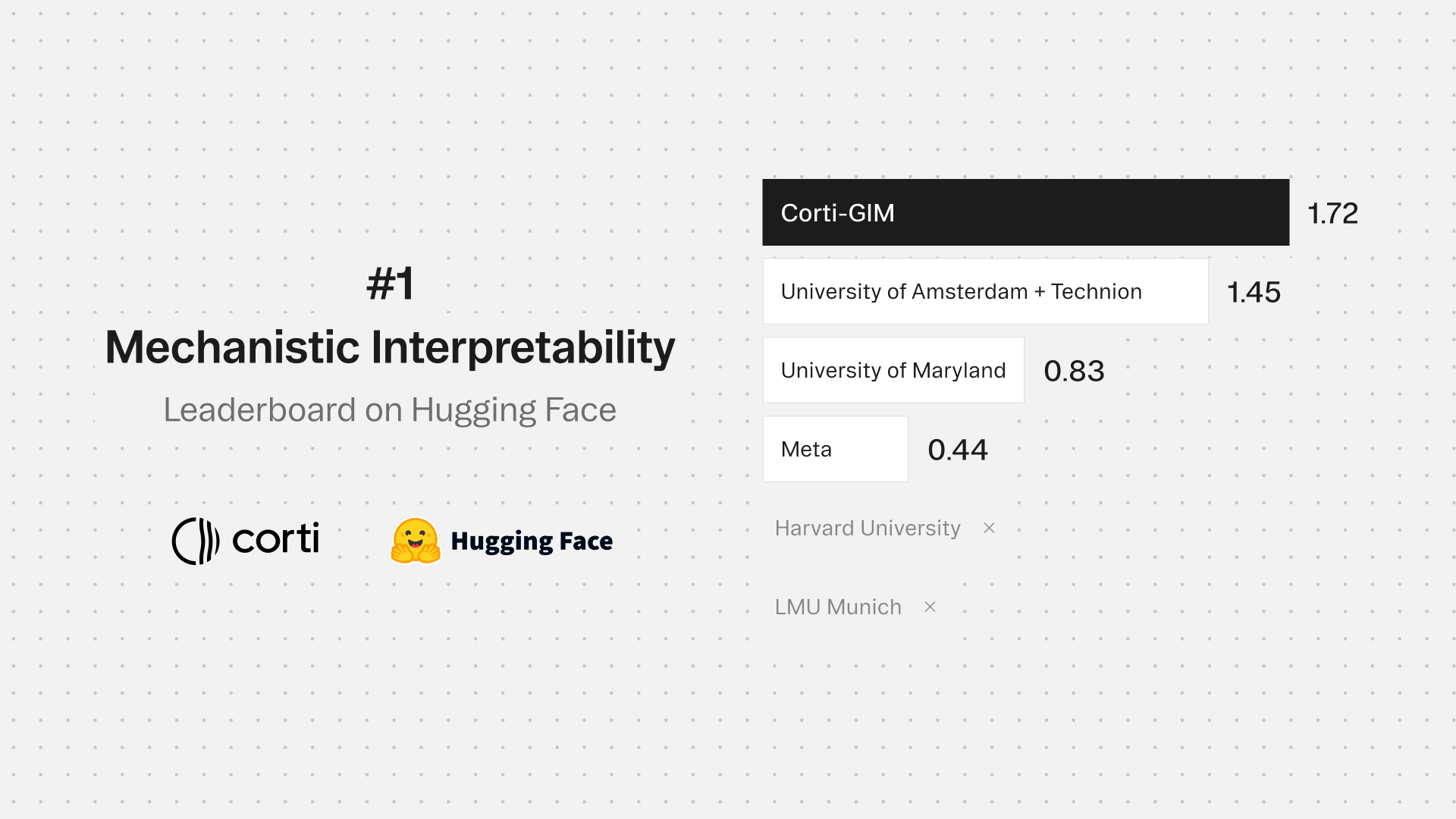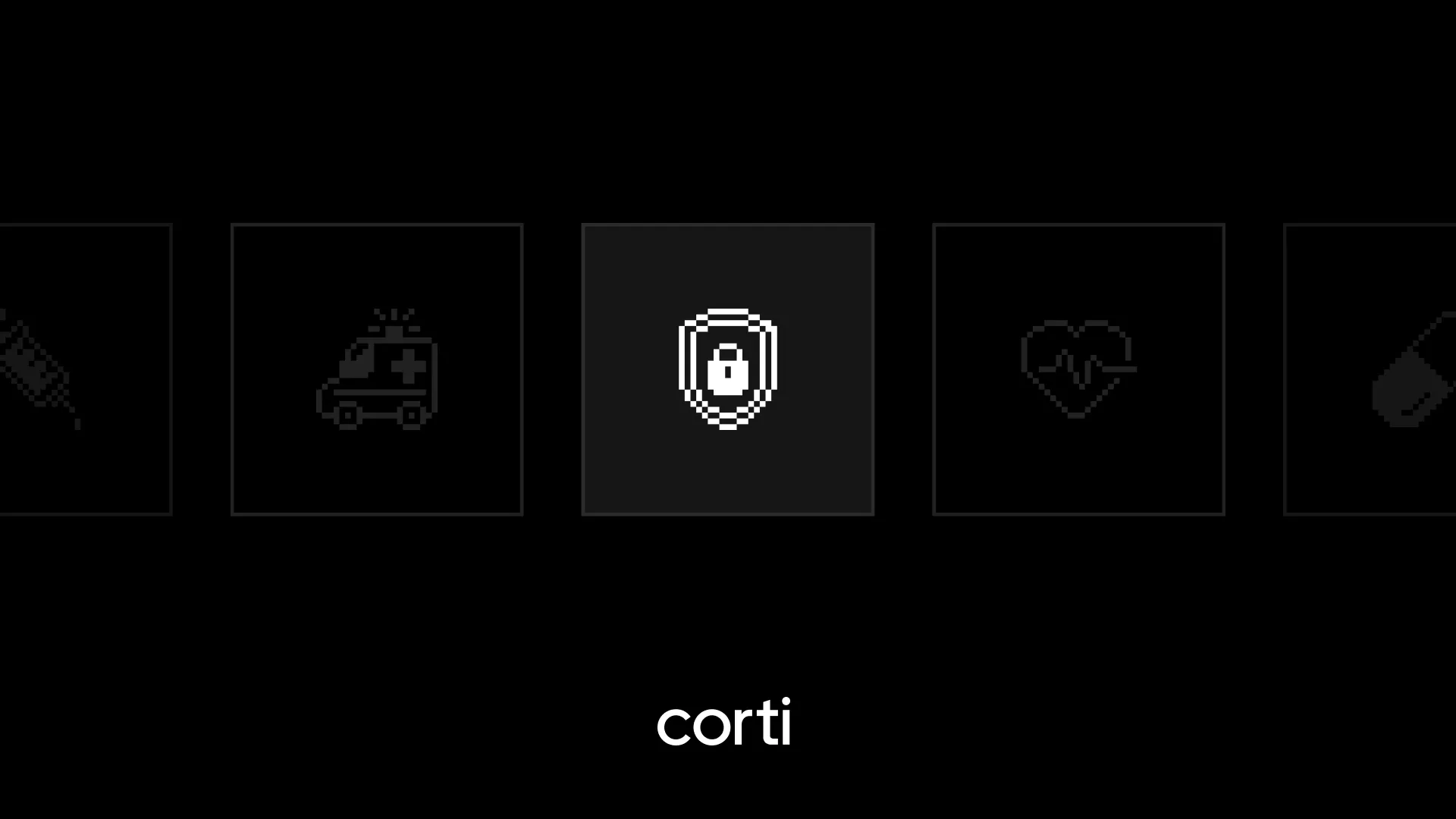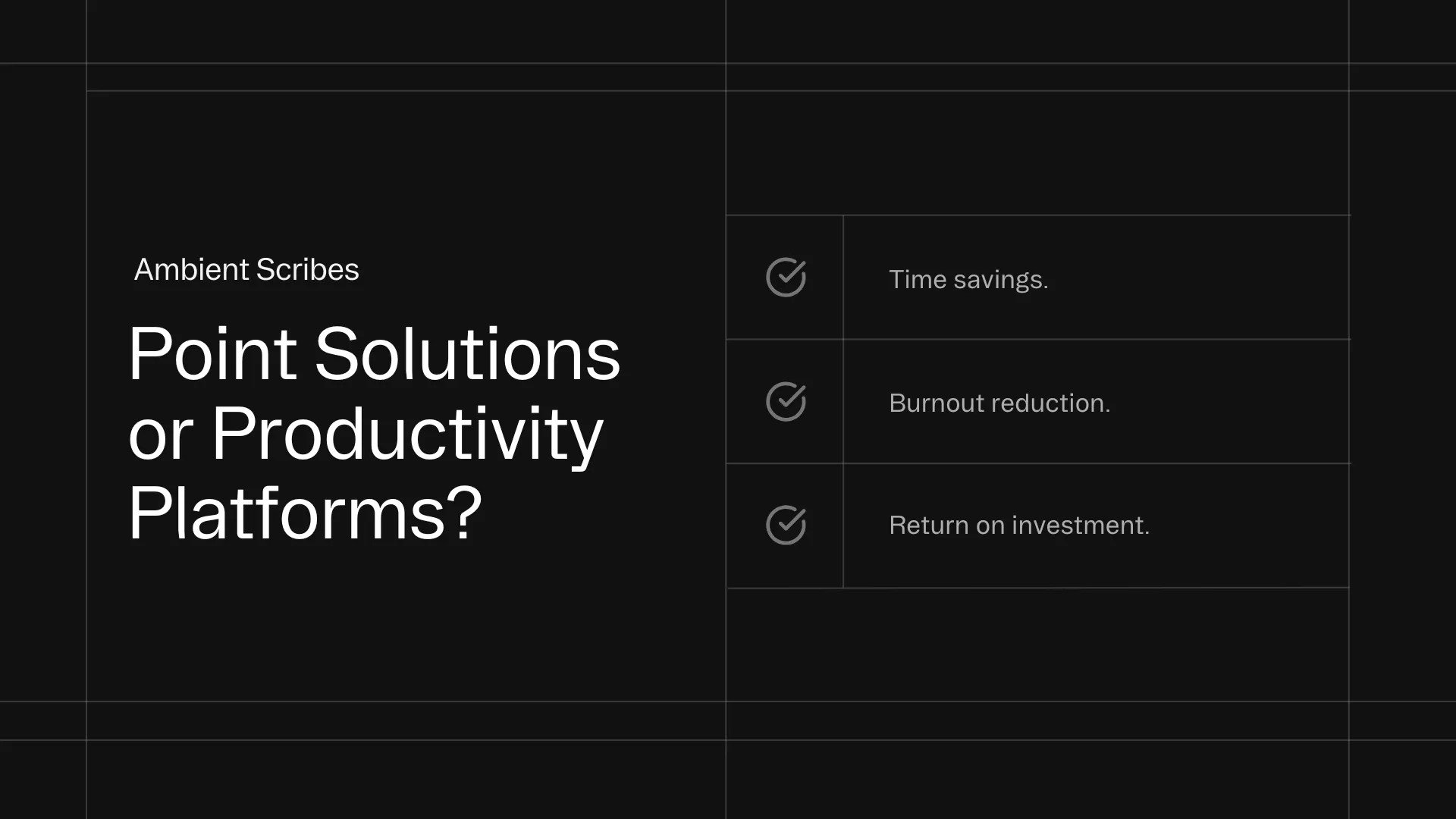Why is everyone talking about ambient scribes?
.webp)
As a practical tool to record a consultation and generate clinical notes, ambient scribes are being hailed as the future of healthcare administration. But how much value do they bring in reality?
Corti’s VP of Product, Henrik Cullen, highlights that ambient scribe technology has limitations, and that we need to think bigger.
“It’s great to have a scribe that automates your clinical notes. But what if the quality of the consultation isn’t that great?”
What are ambient scribes?
After your consultation, you’re likely to spend between 5 to 10 minutes (let’s be honest, sometimes more) reviewing information from a patient interview and writing up a clinical note for the electronic health record (EHR).
An ambient scribe listens in the background to the conversation and records what’s being said between the clinician and patient. Using AI, it has the possibility to convert what was understood in the conversation into a clinical document that the clinician approves and finalizes. It’s more than a transcript or a recording that a doctor still needs to edit: the idea is that the scribe can generate a summarized clinical note at the end with minimal edits.
What problem does a scribe solve?
"Doctors typically spend a lot of time typing away at a keyboard during a consultation, which impacts bedside manner and patient comfort. With an ambient scribe recording in the background, they can focus on the patient and make eye contact."
As a healthcare professional, you don’t always have 5 to 10 minutes after every patient interview to review documentation, meaning that work will pile up. At the end of the day, you might spend two or more hours finalizing documentation, often unpaid.
And without doubt, you are as aware of the risks as we are. Burnout for medical staff coupled with lower quality of documentation. Already GPs can have up to 40 patient consultations per day and as highlighted by Clinical Product Specialist, Lasse Krøgsboll, it’s easy forget important details from interactions that happened hours before. Sadly, that means you’ll end up with poor-quality patient records, impacting patient health outcomes.
How popular are ambient scribes to support healthcare?
"There’s a lot of interest. Most larger healthcare organizations are actively introducing AI scribes, at least as pilots. But I’ve noticed many doctors don’t even know the technology exists, and it’s not yet the norm for doctors. And there’s only a handful of real providers of these technologies on the market right now."
Zooming out, large language models, like ChatGPT, are becoming more popular, but it’s important that healthcare providers become aware that not all AI is built the same. Rather than using free generalist tools, healthcare providers should look to AI out there that’s healthcare-compliant.
Copying and pasting private patient data into free software serious compliance and data security issues. Therefore, if you’re using a healthcare tool to optimize workflows, it’s crucial to choose a technology partner that takes patient privacy and security seriously.
How does an “ambient” scribe differ from other scribe products?
“The term “ambient” is a bit misapplied at the moment. It used to refer to the idea of something passively listening in.”
Currently, there are a few companies that are using the term ambient scribe for simple voice-to-text transcription tools, while others use it to refer to AI scribes.
“As an industry, we need to align that ambiance transcription is one capability, and then machine learning coupled with a scribe is the key element that can convert that transcription into a final clinical document.”
Can ambient scribe tools also add insights to a consultation?
“No, the majority of ambient scribe tools just offer audio-to-clinical notes. An ambient scribe helps writing a clinical note after the fact, thanks to its machine learning or large language model capabilities.”
But then there’s what we’d call a “co-pilot”, technology that augments a clinician’s experience and skills during the interaction by offering real-time input or reminders.
At Corti, we believe that an ambient scribe on its own isn’t enough, and that we need both an ambient scribe and co-pilot element to support healthcare.
“It’s great to have a scribe that automates your clinical notes. But what if the consultation quality wasn’t great? What if you missed a line of questioning that could have explained the patient’s symptoms, or forgot to follow up on a detail? The ambient scribe can only capture what was said – and if the consultation missed something, it means the ambient scribe is creating a lower-quality clinical document for you.”
A co-pilot would be able to interact with you or prompt you in real time, reminding you of something that you missed or the latest research on a medical topic.
And there are other limitations to ambient scribes too.
How do you sift through a lengthy transcript and decide what is relevant?
With an ambient scribe, you’re trusting that the technology, in this case, the large language model, decides what is important when it converts the transcript into a clinical note.
If you rely on a pure transcript from a tool, you essentially rob doctors of the ability to use their expertise and decide what is relevant, what is worth exploring further, and what gets into the final document.
If you need to go back and rewrite a transcript, are you actually saving time?
When a clinical note is based on a recording, it doesn’t include aspects that are left unsaid. There are often things a doctor won’t want to say out loud to the patient, but which should make it into the clinical note. This is where the co-pilot functionality comes in:
"We combine both these technologies. That’s why I think our approach is more doctor-friendly. You know that meme going around, that says AI is making art so we have more time for manual labor? That’s a comment on misuse of technology."
We should be helping doctors focus on what they are good at, and innovating technology to automate the final steps in that process.
We can use these same technologies that we're using to automate documentation to create better consultations and more comprehensive records, rather than just simply easing administrative burdens. In this way, we can combine both ambient scribe and co-pilot functionalities.
Should doctors embrace technology or wait?
“The technology for documentation is here now. Yes, you can wait four years and get a settled product, but in those four years you’re missing out on huge financial savings and the opportunity to reduce the stress and burnout of your physicians.”
Now more than ever, we’re seeing healthcare professionals leave the industry and not be replenished, healthcare sectors worldwide don’t have enough people.
“If you wait to adopt AI for healthcare documentation, I worry there won’t be any doctors left in the hospital to roll it out to.”



